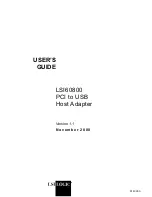
Administration: Stack Management
Stack Topology
Cisco 350, 350X and 550X Series Managed Switches, Firmware Release 2.4, ver 0.4
120
8
Stack in Ring Topology (550 family)
A ring topology is more reliable than a chain topology. The failure of one link in a ring does
not affect the function of the stack, whereas the failure of one link in a chain connection might
cause the stack to be split.
Topology Discovery
A stack is established by a process called topology discovery. This process is triggered by a
change in the up/down status of a stack port.
The following are examples of events that trigger this process:
•
Changing the stack topology from a ring to a chain
•
Merging two stacks into a single stack
•
Splitting the stack
•
Inserting other slave units to the stack, for instance because the units previously
disconnected from the stack due to a failure. This can happen in a chain topology if a
unit in the middle of the stack fails.
During topology discovery, each unit in a stack exchanges packets, which contain topology
information.
After the topology discovery process is completed, each unit contains the stack mapping
information of all units in the stack.
















































